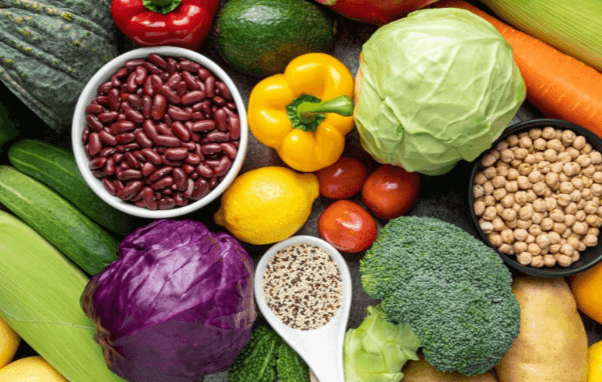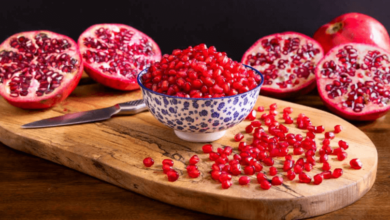wellhealthorganic.com:eat your peels: unlocking the nutritional benefits

Eating fruit and vegetable peels might seem unusual to some, but it’s a practice that can unlock a plethora of nutritional benefits. In this comprehensive guide, we explore the reasons you should consider eating your peels, the specific benefits of various peels, and practical tips for incorporating them into your diet.
The Nutritional Power of Peels
Fruit and vegetable peels are often discarded, yet they contain a high concentration of nutrients, fiber, and antioxidants. By eating the peels, you can boost your intake of these vital components, enhancing your overall health.
Read also wellhealthorganic.com : how to gain muscle @ well health organic
Why Eat Your Peels?
The simple act of eating peels can significantly impact your diet. Peels are rich in essential vitamins, minerals, and antioxidants that are often more concentrated than in the flesh of the fruits and vegetables. Additionally, they provide dietary fiber, which is crucial for digestive health.
Nutritional Benefits of Common Fruit Peels
Each type of fruit peel offers unique benefits. Here’s a closer look at some common fruit peels and their nutritional advantages:
Apple Peels
Apple peels are rich in fiber, vitamin C, and various antioxidants. They contain quercetin, which is known for its anti-inflammatory properties and potential to reduce the risk of chronic diseases.
Orange Peels
Orange peels are a powerhouse of vitamin C, fiber, and flavonoids. They also contain compounds like hesperidin, which may support heart health and have anti-inflammatory effects.
Banana Peels
Banana peels are packed with potassium, magnesium, and fiber. They also have bioactive compounds that may aid in lowering cholesterol levels and improving mood.
Lemon Peels
Lemon peels are high in vitamin C, fiber, and d-limonene, a compound that has been linked to cancer prevention and improved digestion.
Nutritional Benefits of Common Vegetable Peels
Just like fruit peels, vegetable peels are also loaded with nutrients. Here are some notable examples:
Read also rs 119 only wireless earbuds for gaming & music bluetooth earbuds thesparkshop.in
Potato Peels
Potato peels are an excellent source of fiber, potassium, and vitamin C. They also contain antioxidants that help reduce inflammation and boost immunity.
Cucumber Peels
Cucumber peels are rich in fiber, vitamin K, and antioxidants. They can aid in digestion, improve skin health, and provide a refreshing crunch to your salads.
Carrot Peels
Carrot peels are packed with beta-carotene, fiber, and vitamins. They support eye health, boost immunity, and contribute to overall skin health.
How to Safely Prepare and Eat Peels
To enjoy the benefits of eating peels, it’s important to prepare them safely. Here are some tips:
Wash Thoroughly
Ensure you wash fruits and vegetables thoroughly to remove any pesticides, dirt, or bacteria. Using a vegetable brush can help clean the peels more effectively.
Opt for organic produce to minimize exposure to pesticides and chemicals. This is particularly important if you plan to eat the peels.
Incorporate peels into your cooking by adding them to smoothies, salads, or baking. For example, apple peels can be used in pies, and lemon zest can enhance the flavor of your dishes.
Here are some tasty recipes to help you incorporate peels into your diet:
Create a healthy snack by baking apple peels with a sprinkle of cinnamon and sugar.
Make a tangy marmalade using orange or lemon peels to spread on toast or add to desserts.
Blend banana peels with your favorite fruits and greens for a nutrient-packed smoothie.
FAQs
Can you eat all fruit and vegetable peels?
While many peels are edible and nutritious, some peels, like avocado and pineapple, are tough and not suitable for consumption. Always research and ensure the peels you eat are safe.
Do peels contain pesticides?
Peels can contain pesticide residues. Washing thoroughly and choosing organic produce can help reduce exposure to these chemicals.
How do I store peels for later use?
You can store peels in the refrigerator for a few days or freeze them for longer periods. Ensure they are dry and stored in airtight containers.
Are there any peels that should not be eaten?
Some peels, like those of avocados and pineapples, are tough and not palatable. Also, some peels, such as those of certain tropical fruits, may contain natural toxins and should be avoided.
Can peels be used in baking?
Yes, many peels can be used in baking. Citrus zest, for example, can add flavor to cakes and cookies, while apple peels can be used in pies and crisps.
How can I reduce bitterness in some peels?
Blanching or cooking peels can help reduce bitterness. Adding sweet or acidic ingredients can also balance the flavors.
Conclusion
Eating fruit and vegetable peels is a simple yet powerful way to boost your nutrient intake and reduce food waste. By incorporating peels into your diet, you can enjoy a variety of health benefits and enhance the flavors of your meals. Start experimenting with different peels today and unlock their full nutritional potential.




